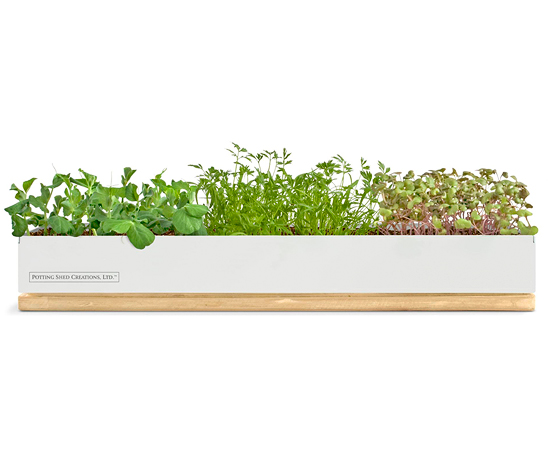






Amy Pennington's indoor garden is an ever-changing collection of growing goodness. In cooler months, there is a jar of sprouts -- easy to manage, quick, and delicious -- for wintertime soups; scented geraniums and lemon verbena (which move outdoors in the summer); and pepper plants transplanted straight from her outside garden. In warmer months, her indoor garden downsizes, with trays of starter plants.
Pennington, a cook, author of Apartment Gardening, and urban farmer, uses her indoor garden to demonstrate gardening efficiency at its best: A complement to whatever she has outside as well as a productive environment that produces its own crops. "What I've tried to do over the years is maximize my growing potential," she says.
See 24 of the easiest houseplants you can grow.
Who can Indoor Garden?
Indoor gardening is a great option for a range of gardeners. Apartment dwellers in particular love it because they don't have the outdoor space. Those with expansive yards of their own may, like Pennington, want to increase the variety and type of items they grow. "Indoor gardening, thankfully, can be really fruitful, literally," Pennington says. "Many herbs do well in a sunny window, and citrus trees are awesome to have indoors -- their blossoms are incredibly fragrant and they might fruit annually, if you keep up on nutrients and pruning."
Sun and Water for Indoor Gardens
The biggest issue for indoor gardens is sunlight. "Often, the ambient light we find in houses is not enough to maintain a healthy, productive plant," she says.
To combat low-light levels inside the house during the day, containers should be placed in south-facing windows. If there are no south-facing windows, west-facing will work, too. Soil should be kept damp but not wet. "It does get dryer indoors, but not much more than a normal summer condition," Pennington says. "People tend to overwater their winter houseplants."
The opposite can occur, too, however. Plants near heater vents, for example, will dry out rapidly. It's best to close those vents, or move the plant elsewhere.
Containers for Indoor Gardens
Pennington finds that plastic containers hold moisture better and many come with built-in trays. "I opt for a long, narrow container so it can easily sit on my windowsill and not get in the way," Pennington says.
What Makes for Good Indoor Garden Plants?
As Pennington demonstrates, just about anything can be brought indoors — edibles, houseplants, flowers. She likes mung bean sprouts and plants that are scented; climate might influence your indoor gardening choices, too. "I live in the Pacific Northwest where we have mild winters, so my thyme and perennial plants stay outside," Pennington says.
How to Start an Indoor Garden
Ambition can get the best of even the very well-intentioned indoor gardener. Start small and keep on top of your indoor gardening plants. "More often than not, people fail on watering and get frustrated when things don't work," Pennington says.
Remember: Plants grow less vigorously in winter, regardless of placement and light. "Short of installing grow lights," Pennington says, "opt for patience."
Copyright © www.100flowers.win Botanic Garden All Rights Reserved